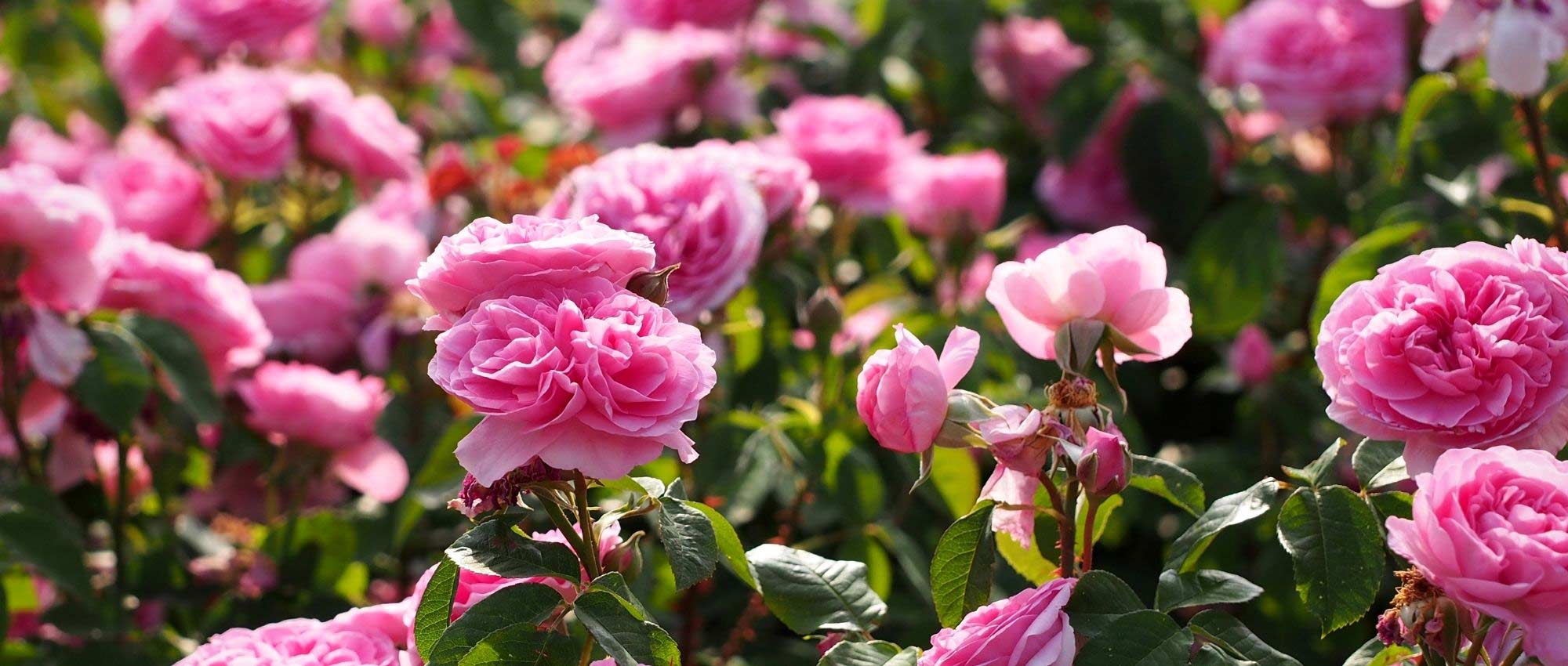
Rose fertiliser
Discover when and how to fertilise your rose bushes!
Contents
Whether you grow them in pots or in open ground, we recommend applying fertiliser to your rose bushes. Indeed, this will promote their growth, help them produce many beautiful, richly coloured flowers, and make them more resistant to disease. There are different types of fertiliser: organic or mineral, granular or liquid, offering a quick boost or a long-term effect… So, how do you choose the ideal fertiliser for your rose bushes, and when should you apply it? Discover all our tips! Do not hesitate to consult our full range of fertilisers for rose bushes.
Why do rose bushes need fertiliser?
By supplying mineral elements, fertilisers nourish the plant. They encourage its growth and promote generous, abundant flowering, which in turn is more colourful. They make the plant stronger and more resistant to diseases and parasitic pests. Fertilisers reduce risk of chlorosis (yellowing of foliage caused by a deficiency or by an absorption problem of certain mineral elements, such as iron). Some fertilisers also include a relating-to-root growth stimulant, which improves establishment and promotes good rooting of the bush.
Fertilisers are made up of three main elements: nitrogen (N), phosphorus (P) and potassium (K), each with a role in vegetative growth, flowering and fruiting, disease resistance or rooting. For each fertiliser, the percentage of each of these three elements is given (for example: a 12-7-10 fertiliser contains 12% nitrogen, 7% phosphorus and 10% potassium). They may also include secondary elements and trace elements, in smaller quantities. Fertilisers are frequently enriched with magnesia, for example.
For roses (as well as for other flowering bushes), favour fertilisers rich in potassium. This element promotes generous, abundant flowering.
Fertilisers are not necessarily chemical or harmful to environment. Natural options exist (horn meal, blood meal…), suitable for organic farming.
It is important, however, to respect dosages, as excess fertiliser is harmful and can burn roots.
Potted roses have greater needs than those planted in open ground: with limited substrate volume, they depend on watering and fertilisation provided. The substrate is depleted more quickly, making repotting (or top-dressing) and fertiliser application necessary.
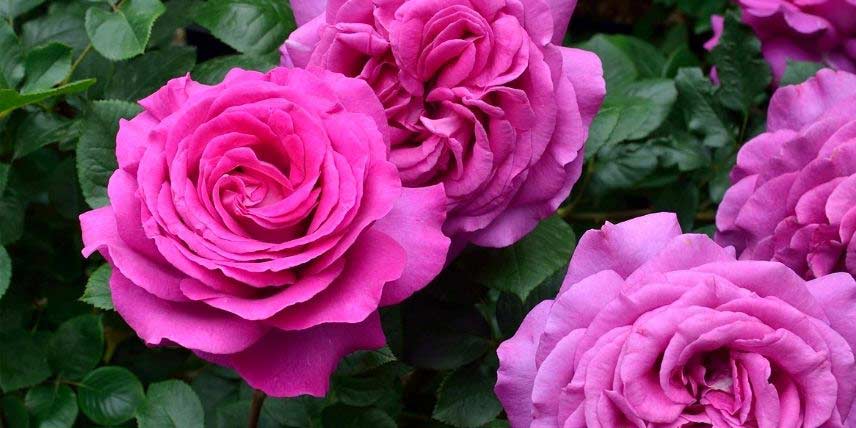
Rose ‘Chartreuse de Parme’
Read also
Garden fertiliser: how to choose it?When and at what frequency should fertiliser be applied to rose bushes?
At planting
We recommend applying fertiliser at planting. Choose a basal granular fertiliser that will release minerals very gradually. You can also simply add manure or compost if available; these will improve soil texture, make it lighter and more aerated, improve water retention and enhance micro-organism activity.
Ongoing care
Thereafter, apply fertiliser during the growing season: from March to September. In winter, roses are dormant, so fertilising is unnecessary.
If you notice chlorosis or nutrient deficiency (foliage turns yellow, especially between veins), apply a kick-start liquid fertiliser. Minerals supplied will be immediately available to plants. If necessary, you can also apply a foliar anti-chlorosis fertiliser to spray onto foliage (repeat every three weeks if necessary).
Liquid fertilisers should obviously be applied more frequently than slow-release granular fertilisers. The former supply minerals that are immediately available to plants and do not persist long in soil. They are perfect for a quick boost. Apply every 15 days.
By contrast, for slow-release granular fertilisers, one application every three months is sufficient. This allows three applications per year: late winter–early spring, summer and early autumn, bearing in mind that fertilising in winter is unnecessary. These slow-release granular fertilisers are less likely to burn roots.
Discover other Roses
View all →Available in 0 sizes
Available in 2 sizes
Available in 3 sizes
Available in 2 sizes
Available in 2 sizes
Available in 2 sizes
Available in 2 sizes
Available in 2 sizes
Available in 2 sizes
Available in 2 sizes
How to fertilise roses?
- To apply liquid fertiliser, it’s very simple: just dilute it in the watering water. The dosage to follow is indicated on the bottle. We recommend moistening the substrate beforehand, because if the soil is dry, roses may absorb too large a quantity of fertiliser at once, which can burn their roots.
- For granular fertilisers: scrape the soil around the plant, then place the granules and cover with 2–3 cm of potting compost, then water. Nutrients are released into the soil through watering, so it is important to water regularly.
- There are also fertiliser sticks: simply insert them into the pot, pushing them in at the edge of the pot. The number of sticks to use is indicated on the packaging, according to the pot diameter.
Take care not to overdose, and avoid applying fertiliser near a watercourse. These precautions are all the more important for liquid fertilisers, which are rapidly leached.
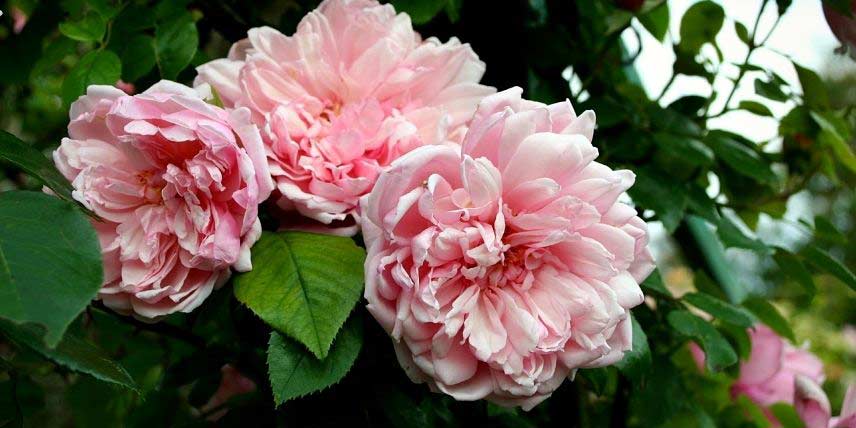
Climbing rose ‘Albertine’
Which fertiliser should I choose for potted roses?
For potted roses, you can choose fertilisers in granular, stick or liquid form, but favour small pack sizes, which are more suitable (packets of 500 g or 1 kg, for example, or liquid fertilisers in 1 L bottles). Similarly, dosage must be more precise than for roses in open ground.

Flowering Plant UAB Stick Fertilizer in a pack of 25 blisters
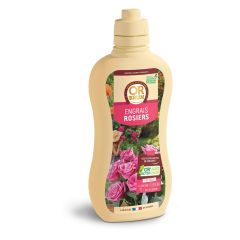
Engrais liquide Rosiers Or Brun en flacon de 1L
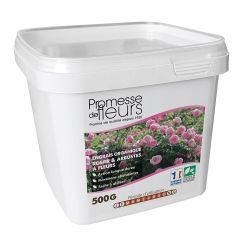
Promesse de Fleurs Fertiliser for Roses and Flowering Bushes, 500g box
Finally, if you prefer a very natural formulation, choose La Belle Bouse. This fertiliser is available in small pack sizes (250 g, 500 g…), which makes it very practical.
Which fertiliser should I choose for roses in open ground?
For roses in open ground, we first recommend adding well-rotted manure or compost at planting, which you will mix into soil or if none is available, choose directly a granular fertiliser, such as those listed below.
You can also add mycorrhizae at planting :
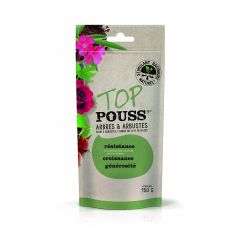
Mycorhize Top Pouss Arbres et arbustes en doypack de 150 g
Thereafter, apply during growth, approximately every three months, a granular fertiliser :
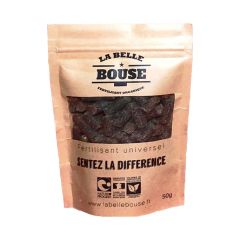
Fertilisant La Belle Bouse - Engrais naturel 100% BIO et local
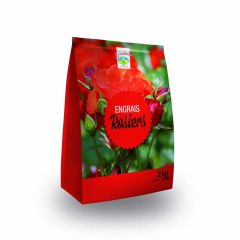
Rose Fertiliser NPK 11-10-17 + 3MgO
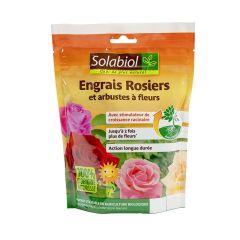
Engrais Rosiers et Arbustes à fleurs Solabiol
- Subscribe!
- Contents
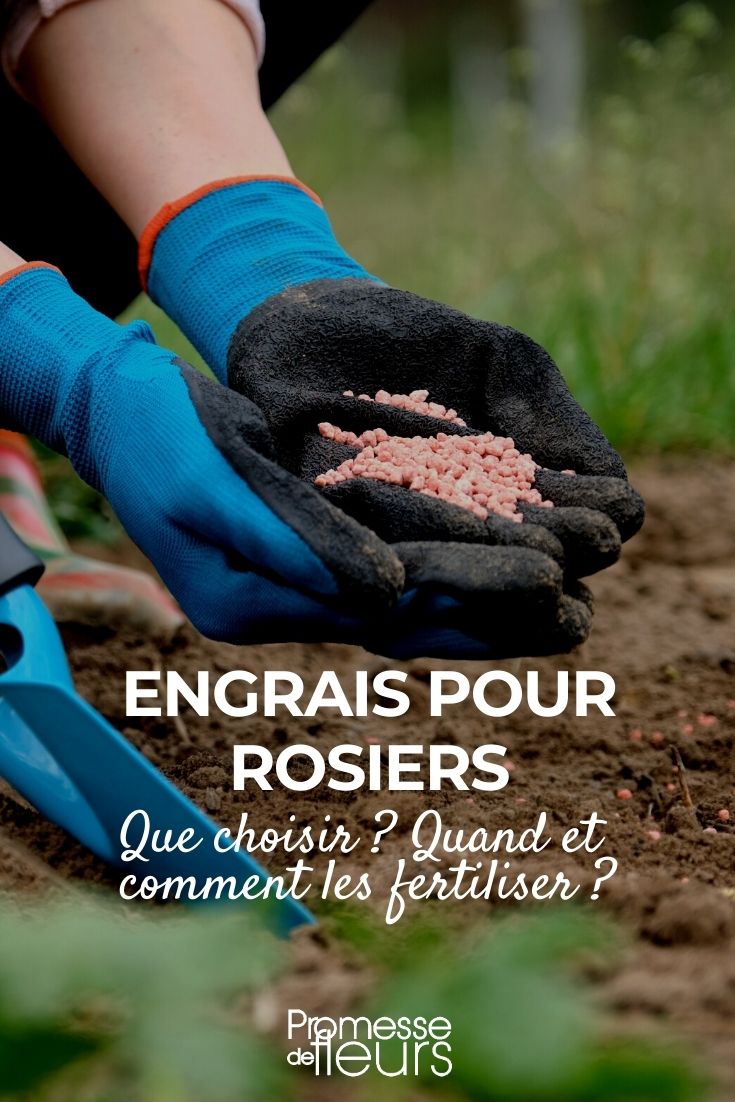































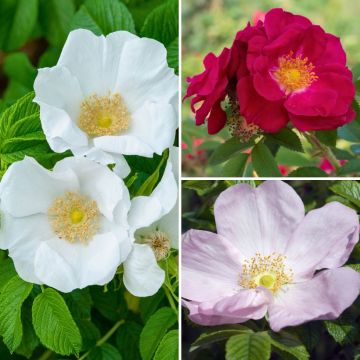
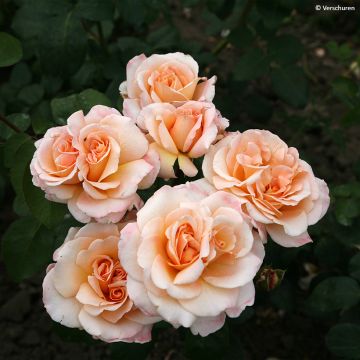
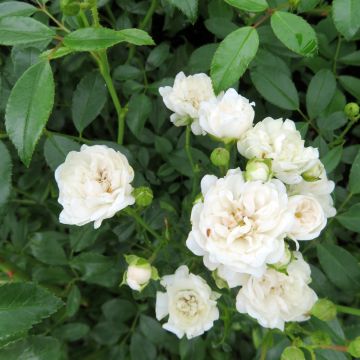



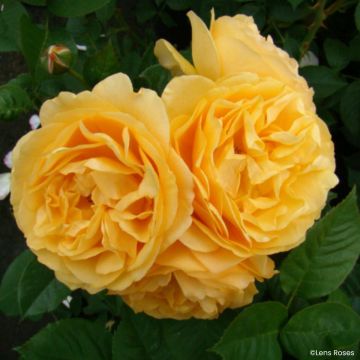
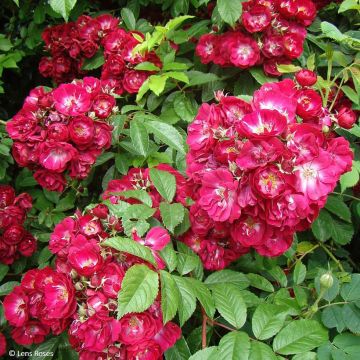
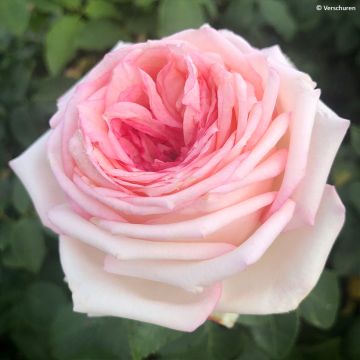
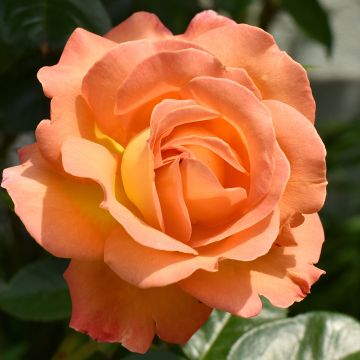
Comments